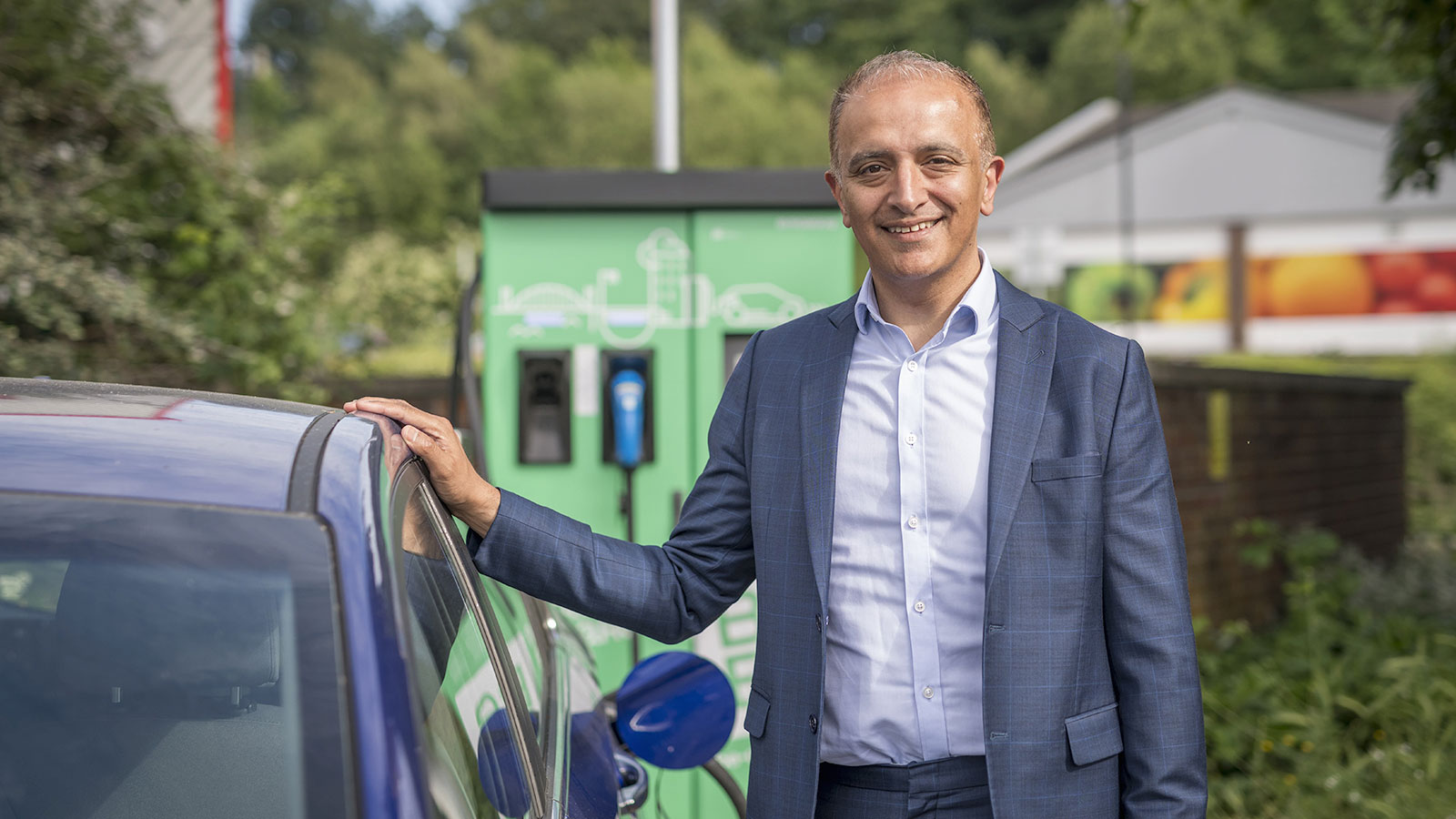Asif Ghafoor, CEO of Be.EV, argues that the Government should let the private sector lead the way in rolling out the UK’s EV charging infrastructure.
It’s an exciting time to be in the EV charging business. There are over 1.1 million EVs on the road, and with the ban on sales of new ICE vehicles set to be brought back to 2030, this number is set to grow at an increasing pace.
While building the EV charging infrastructure for the UK’s EV community is an exciting venture, it does come with its challenges. One of the main hurdles is ensuring we have the power needed to make it happen.
We’re all familiar with the difficulties of the National Grid. It will form the backbone of our net zero transition, yet was built in the 1930s. It’s not an endless well from which we can draw electricity – we need to be clever about how we’re going to give each green sector the power it needs.
Unfortunately, the previous Government’s roll-out of the public EV charging infrastructure hadn’t been clever. Its policies have led to an inefficient and uneven charging network.
Fortunately, even with these challenges, there are still many of us in the industry who know how to navigate these boundaries and provide the infrastructure our EV community truly deserves. It’s really quite simple – if the new government can just listen and take a step back, we can make great things happen together.
Think about where you’re putting chargers
There’s enough power to reach the target of 300,000 EV chargers by 2030, but that doesn’t mean we can put chargers anywhere. If I had a pound for every time someone made plans to install chargers in an area that didn’t have enough power, I’d probably have enough money to build 300,000 EV chargers myself.
Installing chargers in places with enough power is essential, and providers need to make sure they’re using reputable charging networks who will make sure this is the case before installing anything.
In more rural areas where there are EV drivers, but not enough power, there should be Government subsidies to help charging networks install the necessary power to give clusters of villages charging hubs.
This doesn’t mean Labour should be the ones delivering these chargers though, because as we will see, the previous government’s strategy of leading the roll-out hasn’t gone to plan so far.
Scrap lamppost chargers
The Conservative Government’s main policy to install EV charging infrastructure was through Local Electric Vehicle Investment (LEVI) funding, which gives local authorities grants to install chargers.
It’s a good idea in theory, but the policy doesn’t give them any guidance on what to do with the money. What inevitably happens is that councils take the quick and easy option of installing ‘fast’ lamppost chargers, given they’re cheaper to install.
Installing lots of these chargers generates headlines, but it’s short-sighted. Despite what the name suggests, these chargers are very slow, resulting in one person taking up the charger for hours at a time.
More importantly, as vehicle batteries evolve, these chargers will need to be replaced as EVs will become too advanced for them. We need to be far more judicious with our precious power supply than using it up on street clutter.
Instead, we need to build community hubs of rapid and ultra-rapid chargers where drivers can get up to 80% charge in as little as half an hour. This not only gives us chargers that will last for decades, but also allows EV drivers to conveniently incorporate a quick charge into their daily routine.
Motorways are overrated
Another misguided policy from the last Government comes in the form of the Rapid Charging Fund (RCF). This contains a commitment of £70 million to install ultra-rapid EV charge points at motorways.
It’s good to see the Conservatives recognised the need for ultra-rapid charging, but as with lots of other policies it has failed to take power supply into account.
The National Grid is not well-connected enough to give all motorways the power they need for the nation’s EV drivers. And even if there was, there isn’t even enough physical space at motorway service stations to match current or future demand for EV chargers.
Labour needs to be less rigid than the Conservatives were and realise that motorways aren’t the answer – this sort of logic dates back to the 1950s and the world is very different to how it was then.
We should turn our attention to the convenient en-route and easy stop-off areas surrounding our motorway junctions. There is plenty of unused land here that is well-connected enough to the National Grid to have EV charging.
Landowners can take advantage of the need for EV charging by leasing this land for chargers and taking a share of the charging revenue. This way, we can get more ultra-rapid hubs that serve local communities while avoiding National Grid headaches.
It’s not that difficult
The National Grid does make EV charging a bit trickier than we would like, but it’s nowhere near as difficult as you might think. Charging networks are typically well-acquainted with the challenges of getting power to chargers and we know how to get around the problem.
The problem is that the roll-out is being led by a Government that has a million other problems to deal with. EV charging might not be top of the agenda, but that doesn’t mean we can’t make progress. All the Government needs to do is get out of the way and let the private sector get on with it.
At the end of the day, we all want the same thing, and we have more than enough knowledge and capital to get it done – let’s make everyone’s lives easier and let the experts lead the way.


